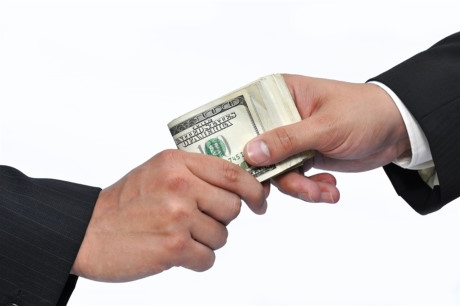 Society
Society

Vietnamese are coming to terms with corruption as only three per cent of those who were forced to pay under the table said they would go to the police, according to UNDP research.
 |
| Vietnamese are coming to terms with corruption as only 3 per cent of those who were forced to pay under the table said they would go to the police. — Photo baomoi.com |
HÀ NỘI – Vietnamese are coming to terms with corruption as only 3 per cent of those who were forced to pay under the table said they would go to the police, according to UNDP research.
The United Nations Development Programme (UNDP) in Việt Nam on Wednesday released the results of its seven-year long research on the efficiency index of Việt Nam’s public administration, which surveyed nearly 75,000 people across 63 cities and provinces from 2009.
Hà Nội and HCM City were the two localities having the biggest subject pools with about 10 per cent of permanent residents in each city participating in the survey.
The research shows that the number of people speaking out about ‘greasing money’ in HCM City went down significantly to only 2.3 per cent in 2015 from 12.5 per cent four years earlier.
Meanwhile, not a single Hanoian of those surveyed reported corrupt acts to the police last year, which was not really a surprise as only 0.2 per cent did in 2011.
The research also recorded the average lubrication payment that would drive HCM City citizens to the police at VNĐ34.8 million (US$1,540) in 2015, a sevenfold increase compared to the tipping point of VNĐ5.8 million in 2011.
“Those figures reflected an increasing tendency of Vietnamese in getting used to corruption,” said UNDP policy analyst Đỗ Thị Thanh Huyền.
“Corruption still exists and is getting worse despite determined efforts from the highest level to eradicate it”.
According to the UNDP research, more than 28 per cent of surveyed residents in HCM City said they had to pay an average of nearly VNĐ14.5 million to have land use certificates granted. The amount was about 12 times higher in Hà Nội at about VNĐ1.2 million.
Yet the capital scored higher in terms of “unofficial payments” to medical staff for better treatment at public hospitals. Hanoians had to pay on average more than VNĐ3.5 million extra per hospital visit when it cost HCM City residents approximately VNĐ730,000.
The public education sector was not left untainted in the national epidemic either. Dedicated parents in Hà Nội were somehow forced to pay an extra of about VNĐ630,000 a semester to primary teachers or school administrative boards last year, a 25 per cent decrease from some VNĐ824,000 a semester in 2011.
The trend, meanwhile, was going upwards in HCM City. It costs HCM City parents nearly VNĐ853,000 a semester for unregulated school fees last year, increasing from VNĐ510,000 a semester in 2011.
The survey also shows that more than 50 per cent of Vietnamese believe people have to pay a graft to get a job in the government.
The citizens deemed the recruitment of public servants was not based on the employees’ capabilities but their personal connections. They were marked by the survey takers as “important” or “very important” criterion to earn a seat in the government for five consecutive years.
More than a quarter agreed that public servants embezzled for personal use in 2015, a slight increase from 21 per cent four years earlier.
Despite rhetorical calls from top leaders to combat corruption over the years, the national epidemic still rages in the country as Việt Nam is continuously ranked in the bottom part of the global corruption perception indexes (CPI).
Transparency International (TI) last year placed the Southeast Asian nation 112th out of 168 countries and territories in terms of corruption level in the public sector.
Việt Nam’s CPI scored only 31 points on the 100 point scale, which has remained unchanged in four consecutive years since 2012 and has the country listed as having a serious corruption problem. – VNS